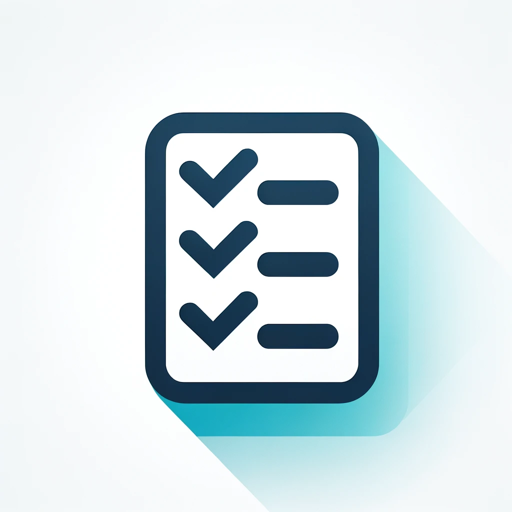Agent Swarm-autonomous agent swarm system
Autonomous AI for smarter tasks
Explain agent swarms?
How to build agents?
Define hierarchical swarm?
What is SOB?
Related Tools
Load More
BabyAgi.txt
Step by Step task manager that automatically saves memory to a .txt file. Inspired by BabyAgi by @yoheinakajima. GPTavern
Assistant Hunter
Search through 27K+ GPTs and find the best AI assistants for you

Agent Finder (By Staf.ai and AgentOps.ai)
Find the best AI agent for your problem, no bulk export

Swarm Agent Chatbot
A chatbot for discussing 'agency-swarm', a project for orchestrating agent swarms by vrsen.ai

AGI2
Guide for multi-agent GPT system integration.

Forager
Precision online searches with expanded capabilities.
20.0 / 5 (200 votes)
Overview of Agent Swarm
Agent Swarm refers to the concept of organizing and coordinating a group of autonomous agents to work together towards achieving a common goal. These agents operate under a hierarchical structure, where higher-tier agents manage, create, or even terminate lower-tier agents. The idea is to create a self-sustaining system that requires minimal human intervention. Unlike orchestration, where a human must trigger actions, an autonomous swarm continues executing tasks independently based on predefined mission parameters and goals. This approach is inspired by natural swarm behavior, like ants or bees working together with defined roles and objectives. A practical example involves an IT automation project where a swarm of agents is used to perform repetitive infrastructure tasks, such as system updates or troubleshooting, without human intervention. In this scenario, agents could handle individual servers or applications, reporting back to higher-tier agents for coordination and error handling, eventually automating large-scale IT processes with minimal oversight.

Key Functions of Agent Swarm
Agent Creation and Management
Example
An agent responsible for creating other agents dynamically based on mission needs.
Scenario
In a project that requires multiple specialized agents, a 'master' agent could autonomously generate agents to handle tasks like data retrieval, coding, or security checks. For instance, when a system needs monitoring across different cloud infrastructures, it creates cloud-specific agents to manage each environment efficiently.
Hierarchical Command and Control
Example
A Supreme Oversight Board consisting of high-level agents that provide governance over the entire swarm.
Scenario
This function is used in situations where oversight is critical, such as a security operation in which the top-tier agents ensure that lower-tier agents follow ethical and legal guidelines while executing tasks, such as managing sensitive data or compliance audits.
Task Specialization and Delegation
Example
Agents built for singular, focused tasks.
Scenario
In a development project, agents could be assigned single tasks like writing a function, testing a bug fix, or sending a specific email. A more complex agent delegates these specific tasks to lower-tier agents, ensuring maximum focus and efficiency. For example, one agent could specialize in code testing, while another handles documentation writing.
Target Users of Agent Swarm
IT and Automation Engineers
These users would benefit from automating repetitive infrastructure tasks. By employing Agent Swarm, they can significantly reduce manual work, allowing them to focus on higher-level tasks like system architecture or strategic initiatives.
AI Researchers and Developers
For individuals working on complex AI systems, Agent Swarm offers a scalable approach to building autonomous systems. Researchers looking to experiment with swarm intelligence or developers aiming to automate project management tasks can benefit from using swarms to streamline processes and enhance decision-making efficiency.

How to Use Agent Swarm
Visit aichatonline.org for a free trial
Start by visiting aichatonline.org for a free trial. There's no need for login or ChatGPT Plus to access the basic functionalities.
Configure the initial agent
Once on the site, configure your initial autonomous agent by specifying a mission or task that you want the agent to accomplish. This includes setting its objectives and constraints.
Define agent hierarchy
Establish a hierarchy if you need multiple agents. Set up oversight agents that can manage and monitor the actions of subordinate agents.
Deploy agents
Deploy the agents by starting their tasks. They will work autonomously based on the initial configuration and any subsequent instructions.
Monitor and refine
Keep an eye on the agent swarm’s progress. You can refine their missions or update tasks based on the feedback they provide.
Try other advanced and practical GPTs
SEO Writer 9000
AI-powered content creation for SEO success

HR Automation GPT
AI-powered HR process optimization

Itinerary Planner - Globetrotter Guide
AI-Powered Personalized Travel Planning

GPT Finder
Discover AI-Powered Custom GPTs Effortlessly

PDF/DocX Creator
AI-powered LaTeX document converter

TradeComply
AI-Powered HTS Code Identification

SEO E-E-A-T Assistant
AI-powered insights for superior SEO content.

Visual Synthesizer
AI-powered visualizations that simplify complex data

Text Scanner
AI-powered text extraction from images

Emblem Engineer
AI-powered emblem creation made easy

Debatable
AI-driven content and debate tool

The AI Post
AI-powered news bulletins at your fingertips.

- Data Analysis
- Project Management
- Content Generation
- Software Development
- AI Research
Common Questions About Agent Swarm
What is an Agent Swarm?
An Agent Swarm is a group of autonomous agents that work collaboratively to achieve complex tasks. Each agent can perform specific duties independently, and the swarm as a whole can adapt to evolving situations without needing constant human input.
How do I set objectives for the agents?
Objectives are set by defining mission parameters. This includes outlining tasks, specifying goals, and providing constraints that guide the agents’ actions. The higher-tier agents can also oversee and adjust the missions of lower-tier agents as needed.
What types of tasks can Agent Swarm handle?
Agent Swarm can handle a variety of tasks, including project management, data analysis, content generation, and even software development. The swarm adapts its approach based on the complexity of the mission.
Can I monitor and adjust the agents’ activities?
Yes, you can monitor the progress of the agents and adjust their activities. You can add new objectives, change existing ones, or even deactivate agents if needed, allowing for dynamic control.
Is Agent Swarm secure?
Agent Swarm is designed with security in mind, using role-based access control to ensure that sensitive tasks are handled by authorized agents only. Higher-tier agents oversee critical decisions, maintaining the swarm’s ethical and operational integrity.